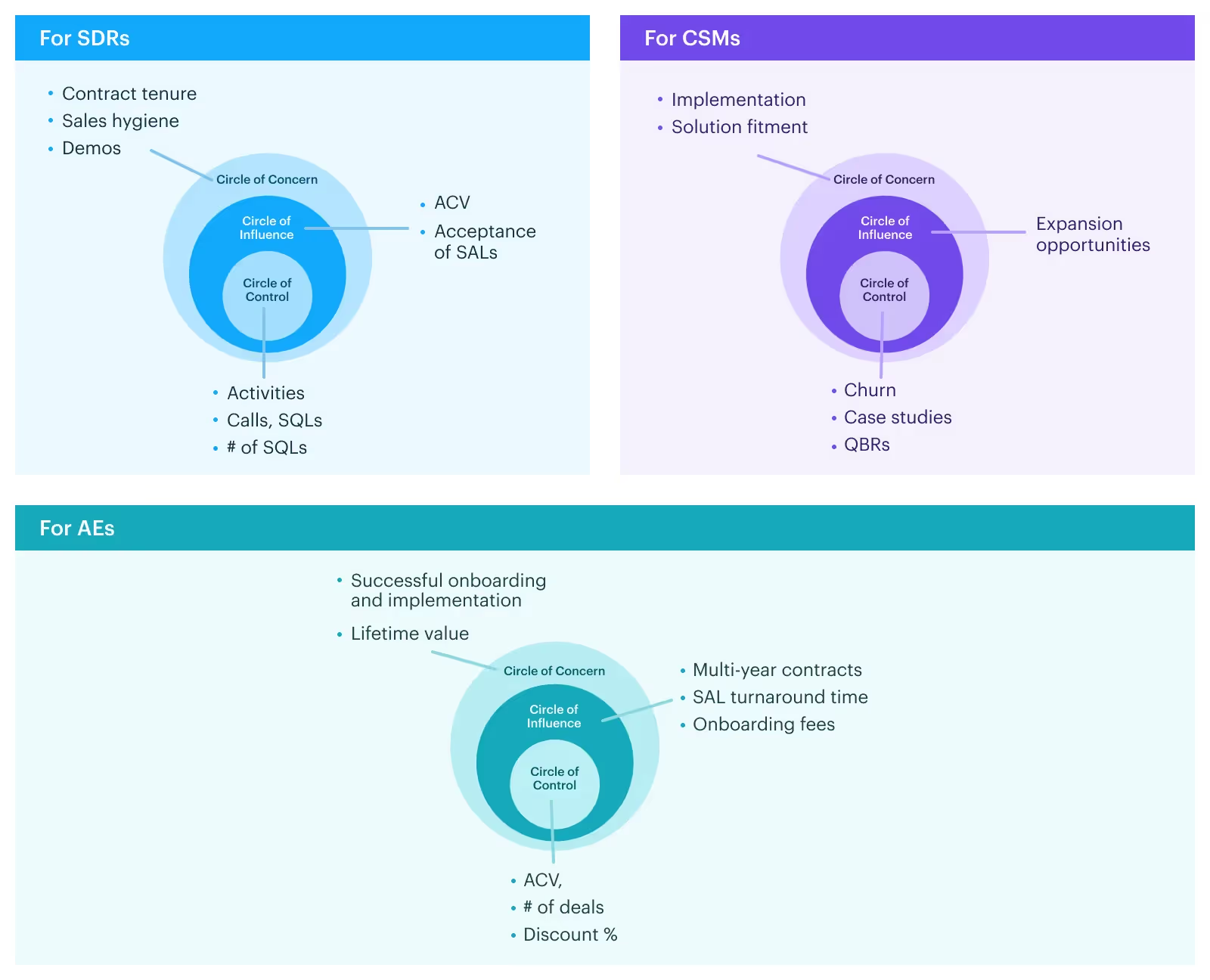On a regular basis, your reps’ are being mapped and measured on a pre-defined set of commission components. However, are your reps able to look at those components and immediately grasp how they solely impact their compensation?
Not always, right? And, have you wondered why?
The main reason for the understanding gap is that not all components of the compensation plan resonate with the respective rep’s role. When your reps end up having not-so-relevant commission components, they tend to get confused and gradually become less-focused on their targets.
So, what logic can be used to clearly define the compensation components for your reps?
The approach is explained in detail with a concept that was presented by Stephen Covey in his book ‘The 7 Habits of Highly Effective People.’
Understand Covey’s Concept to Define your Components with Clarity
Consider the below concentric circles as a canvas to mark the work bucket list based on these definitions:

- Items listed on the circle of concern hold all the many things that you worry about, but upon which you have nothing to do about.
- Items listed on the circle of influence include the things that you could probably influence and make the necessary changes.
- Items listed on the circle of control contain all the things that are completely under your control.
Apply the above concept to define the components of your compensation plan. The result most likely would be to:
Ensure that your reps’ commission components fall directly into their circle of control/influence (i.e) things they’ve control over or things that they can do something about. And, enable your reps to utilize this clarity to focus time and energy on things that matter the most to them.
Now, let’s consider some of the day-to-day situations that call for detailed compensation components.
What is the Problem with Loosely Coupled Compensation Components?
Bringing up a few real-world scenarios to give you a deeper understanding of the struggles that reps’ deal with,
- Some companies end up using ACV as a metric for compensating SDRs. SDRs can look for bigger companies to attain higher ACV. However, they can’t really put a pipeline value since AEs determine the potential. And, it keeps on evolving throughout the lifecycle of the deal. So, SDRs can only influence SALs and # of SALs. Hence, compensating SDRs based on components that influence closure or pipeline becomes unreasonable
- Some companies want to ensure new businesses don’t churn and end up making AEs in charge of implementation and onboarding. AEs are accountable for deal closure. Even though implementation and onboarding come under customer happiness, they are not necessarily a sales priority. It is more of a CSM’s work and AEs need to keep moving on to the next deal.
As a sales manager or leader, you ought to save your reps’ from the havoc. Hence, it’s essential to eliminate poorly defined goals and goal overlaps. More importantly, avoid including unreasonable success metrics in your comp plans.
How to Compile Lucid Commission Components?
Look at the examples below to know how Covey’s concept fits perfectly in the SaaS scheme of things. For each role, a certain set of compensation components are mapped and mentioned in accordance with the circle of control, circle of influence, and circle of concern.

Important: Compensate reps only on the components that are in their circle of control and offer bonuses for those in their circle of influence. Goes without saying, the components within the circle of concern shouldn’t be included in their comp plan.
How to Compensate your Reps with Clarity and Context?
Firstly, your compensation plans need to be as simple as possible. However, making them isn’t as simple, as they have to be tailor-made for each role. And, there's so much to take into account to arrive at a fair plan. Also, taking a one-size-fits-all approach to design comp plans is considered to be ineffective.
So, how can you simplify it for yourself? How do you choose the right commission plan types for various GTM roles?
Get to know all the answers in our SaaS compensation plan master guide. And, reward your star performers, the right way.
Download your free copy here.












